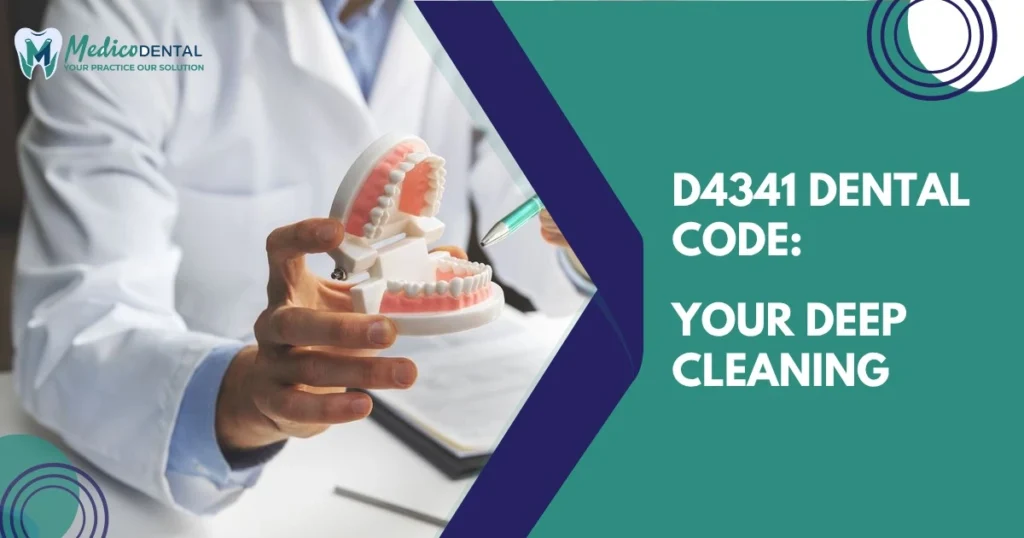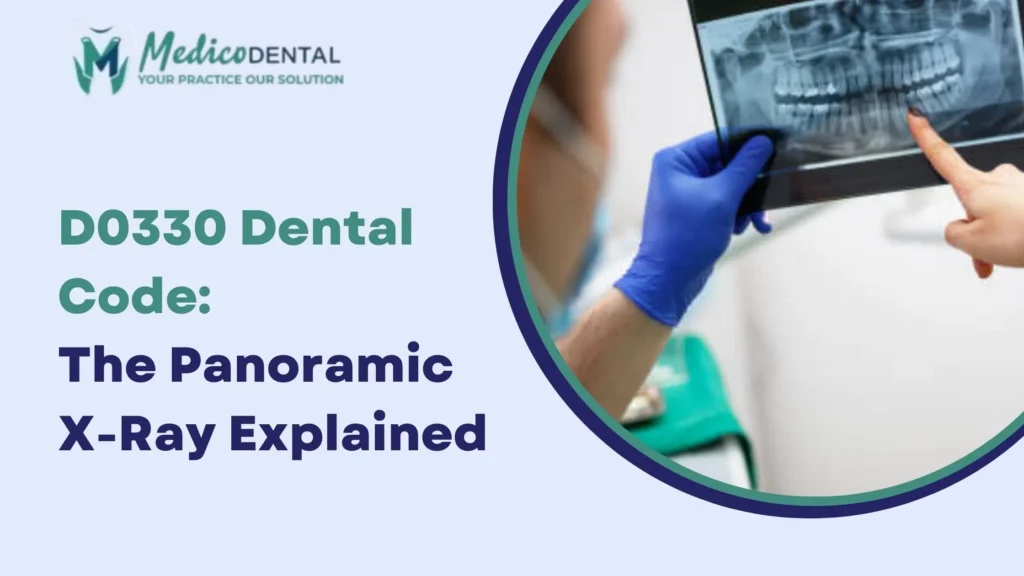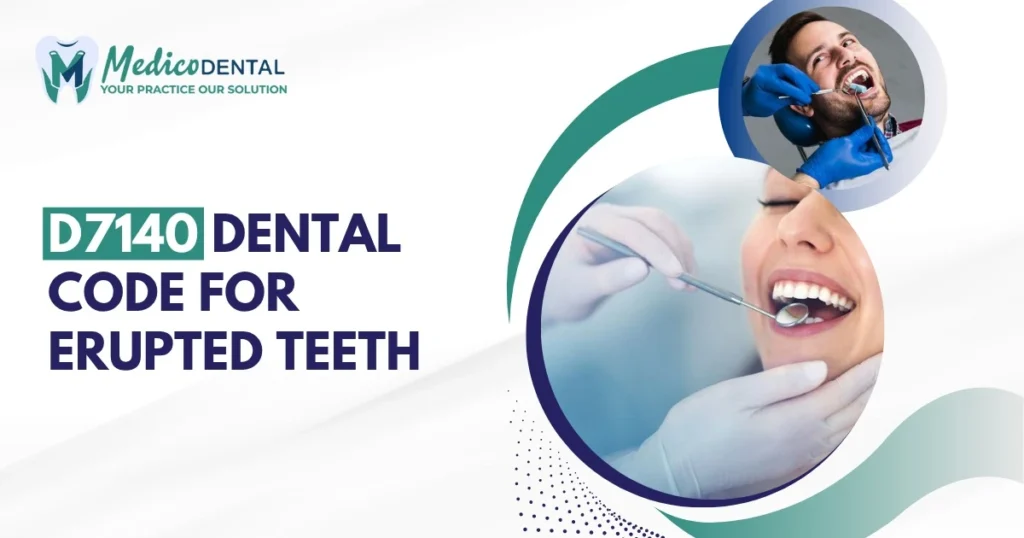The D4341 dental code refers to a specific procedure in dentistry known as periodontal scaling and root planing (SRP). This treatment is often prescribed for patients suffering from gum disease, especially when there is moderate to severe plaque buildup below the gum line. Understanding this code is essential for both dental professionals and patients, as it helps in identifying and billing the treatment accurately. By using D4341, dentists can address the concerns of gum disease and ensure the appropriate treatment is given for optimal oral health.
What is D4341 Dental Code and Why is It Important in Dentistry?
D4341 Dental Code is used for scaling and root planing when gum disease is present, particularly in cases involving more than four teeth within a single quadrant of the mouth. The procedure is focused on removing plaque, tartar, and bacteria from below the gum line and smoothing out the root surfaces to prevent further infection. It is crucial in preventing the progression of gum disease, as it targets areas where regular brushing and flossing cannot reach. The importance of D4341 lies in its role in halting the advancement of periodontal disease, preventing tooth loss, and maintaining overall gum health.
Understanding Periodontal Scaling and Root Planing (SRP)
Definition and Purpose of SRP
Periodontal scaling and root planing (SRP) is a non surgical treatment aimed at cleaning the teeth and gums to treat gum disease. Scaling involves removing plaque, tartar, and bacterial toxins from both above and below the gum line. Root planing smooths out rough root surfaces to eliminate bacteria and prevent further buildup. The purpose of SRP is to restore gum health by halting the progression of periodontal disease, improving the attachment of the gums to the teeth, and reducing inflammation.
Difference Between Routine Cleaning and SRP
Routine dental cleanings are typically performed when there is minimal plaque or tartar buildup and are often limited to the surfaces of the teeth above the gum line. In contrast, SRP is a deeper cleaning technique used when there are signs of gum disease. SRP involves cleaning below the gum line, where bacteria can cause inflammation and tissue damage, making it a more intensive treatment than routine cleaning. An endodontist might also be involved in cases where there is severe damage to the tooth’s root that requires root canal therapy, which could be necessary after periodontal issues like those treated with SRP.
Scope and Application of D4341 Dental Code
When is D4341 Dental Code Used? (Four or More Teeth per Quadrant)
D4341 Dental Code is specifically used when periodontal scaling and root planing are required for four or more teeth within a single quadrant. A quadrant is a division of the mouth, and this procedure is often necessary when the gum disease is severe enough to affect multiple teeth in a specific section of the mouth. Dentists will typically recommend D4341 Dental Code when they observe deep pockets around the teeth, which indicate that the infection has progressed beyond the point that a standard cleaning can treat.
D4341 vs D4342: Key Differences
While both D4341 and D4342 are used for scaling and root planing, the key difference lies in the extent of the treatment required. D4341 is used for treating four or more teeth in a quadrant, whereas D4342 is used for one to three teeth within a quadrant. D4346 is another related code used for scaling and root planing in the presence of moderate to severe gingivitis, where there is no deep pocketing but significant inflammation and bleeding. Understanding the differences between these codes helps ensure that the correct procedure is billed and that the patient receives the appropriate level of care.
The Procedure: What to Expect During SRP
Steps Involved in Scaling and Root Planing
The procedure for SRP begins with a thorough examination and assessment of the patient’s gums. The dentist may use a local anesthetic to numb the treated area to minimize discomfort. The scaling process involves removing plaque, tartar, and bacterial buildup from both above and below the gum line, usually using specialized dental instruments. After the scaling, the dentist will perform root planing, which involves smoothing the rough surfaces of the roots to prevent further bacterial accumulation. Depending on the severity, this process may be completed over several appointments.
What Does the Treatment Address in Gum Disease?
Scaling and root planing address several key issues related to gum disease. It helps reduce inflammation in the gums, removes harmful bacteria, and promotes the reattachment of the gum tissue to the teeth. This procedure is particularly effective in treating gingivitis and more advanced stages of periodontitis, where deep pockets have formed between the teeth and gums. By removing the infection and smoothing the roots, SRP provides a pathway for the gums to heal, preventing further damage and the potential loss of teeth.
Billing and Documentation for D4341
Proper Documentation for Claim Approval
When billing for D4341, it is crucial to provide comprehensive and accurate documentation to ensure successful claim approval. Dental professionals must document the patient’s condition, the necessity for periodontal scaling and root planing, and the extent of the disease being treated. Detailed patient records should include the following:
Clinical notes
Specific observations regarding the condition of the gums, presence of pockets, and signs of periodontal disease.
Treatment plan
A clear outline of the proposed treatment, specifying which quadrants of the mouth will receive D4341.
Patient history
Relevant medical history that justifies the need for SRP, such as previous dental issues, disease progression, or underlying health conditions.
By keeping thorough documentation of these elements, dental practices can streamline the claims process and minimize the chances of denials.
Pocket Depths and Radiographic Evidence Requirements
A critical aspect of D4341 billing is the documentation of pocket depths and radiographic evidence. Pocket depths should be measured using a periodontal probe to determine the severity of gum disease. Typically, a depth of 4mm or greater in multiple areas of the quadrant indicates the need for SRP. Radiographs (X rays) are essential to demonstrate bone loss or other signs of periodontal disease. Dental insurers often require evidence of these findings to support the claim for D4341, as they show the necessity of SRP over a routine cleaning. The more specific the documentation, the higher the likelihood of claim approval.
Common Denial Reasons and How to Avoid Them
Several common reasons for D4341 claim denials can be avoided with proper documentation and understanding of insurance guidelines:
Inadequate documentation
Failure to document pocket depths, clinical observations, and radiographs can result in a denial. Ensure that all necessary details are included in the patient’s records.
Incorrect coding
Sometimes, a dentist may mistakenly use the wrong code (D4342 for fewer teeth or routine cleaning codes). This can lead to a rejection. Double check the number of teeth treated and the severity of the condition.
Frequency limits
Some insurers limit the frequency of SRP treatments per quadrant to once every 24 to 36 months. Failure to check for frequency restrictions before submitting claims can result in a denial.
By being thorough and accurate in documentation and familiar with insurance policies, dental practices can avoid these common pitfalls.
Insurance Considerations for D4341
Frequency Limitations on SRP Treatments
Many insurance companies impose frequency limitations for scaling and root planing (D4341). Typically, insurers only cover SRP treatments once every 24 to 36 months per quadrant. If a patient has received SRP treatment within this timeframe, a subsequent claim may be denied, even if the need for further treatment is legitimate. Dental providers must carefully review the patient’s insurance plan to ensure that the treatment frequency is in compliance with the insurer’s guidelines. If SRP treatments are required sooner than the insurance allows, the dentist may need to provide additional documentation to justify the early intervention, such as detailed periodontal assessments or proof of disease progression.
Insurance Coverage Guidelines for D4341
Insurance coverage for D4341 varies based on the patient’s policy, but most plans consider it a necessary treatment for patients with moderate to severe gum disease. To increase the chances of approval, dental offices should ensure they adhere to the following guidelines:
Pre authorization
Some insurers may require pre authorization before performing SRP. It’s important to contact the insurance company and obtain approval before treatment, especially for new patients or patients with updated plans.
Medical necessity
Insurance plans generally require proof of medical necessity for D4341. This includes showing evidence of moderate to severe periodontal disease, such as significant plaque buildup, bleeding gums, or pocket depths of 4mm or more.
Fee schedule
Insurance companies often provide a set fee schedule for D4341. It’s important to check whether the coverage matches the amount billed and whether there are any co pays or patient responsibilities.
Understanding these insurance considerations ensures smoother claims processing and helps patients know their potential out of pocket expenses.
Challenges with D4341 Claims
Upcoding Issues and How to Avoid Denials
Upcoding refers to billing for a higher level of service than was actually provided. For D4341, this might involve submitting a claim for a more extensive procedure when a less invasive treatment (like D4342) would be more appropriate. Upcoding is often flagged by insurance providers and can result in claim denials or audits. To avoid upcoding issues:
Accurate diagnosis
Ensure that the diagnosis justifies the use of D4341. This means confirming that multiple teeth in a quadrant require SRP and that the disease severity is high enough to warrant it.
Comprehensive documentation
Keep clear records showing why D4341 is necessary and that no other, less intensive treatment options were appropriate.
By ensuring the procedure matches the treatment provided and maintaining clear records, dental practices can avoid the serious consequences of upcoding.
Best Practices for Claim Submission
To improve the chances of successful claim approval, follow these best practices:
Submit claims promptly
Filing claims in a timely manner ensures that all the details are fresh and minimizes the risk of errors or forgotten documentation.
Use accurate procedure codes
Double check the codes used in the claim to ensure they match the procedures performed. Incorrect coding is one of the most common causes of claim denials.
Verify insurance details
Before proceeding with treatment, verify the patient’s insurance coverage, including frequency limitations, co pays, and covered services.
Follow up on rejected claims
If a claim is denied, follow up promptly with the insurer. Review the reasons for rejection, make necessary adjustments to the claim, and resubmit it.
By staying organized, thorough, and proactive, dental practices can reduce the risk of claim denials and delays.
Summary
The D4341 dental code is essential for treating patients with moderate to severe gum disease through periodontal scaling and root planing. Proper usage of this code ensures that the patient receives the appropriate care while also enabling dental professionals to accurately bill for their services. The key to successful billing and documentation for D4341 lies in maintaining detailed patient records, documenting pocket depths and radiographic evidence, and adhering to insurance policies and guidelines. With the right documentation and understanding of insurance coverage, dentists can provide the best care for their patients while reducing the risk of claim denials.
FAQs
What is the difference between D4341 and D4342?
Ans. D4341 is used when treating four or more teeth in a quadrant, while D4342 is used for one to three teeth in a quadrant. Both codes are used for scaling and root planing but differ in the extent of treatment required.
Can D4341 be performed on patients without insurance?
Ans. Yes, D4341 can be performed on patients without insurance. However, without insurance coverage, patients will be responsible for the full cost of the treatment. It’s important to discuss payment options with patients in advance.
How long does the D4341 procedure take?
Ans. The procedure typically takes one to two hours per quadrant, depending on the severity of the gum disease. For more complex cases, multiple appointments may be necessary to complete the treatment.
Is D4341 covered by all insurance plans?
Ans. No, coverage for D4341 varies by insurance plan. Some plans may require pre authorization or have limitations on the frequency of treatments. It’s important to check the patient’s specific plan details before proceeding with treatment.
What can patients expect after a D4341 procedure?
Ans. After the procedure, patients may experience some discomfort, bleeding, or swelling in the treated areas. It’s important to follow the post treatment care instructions to ensure proper healing and avoid complications.



